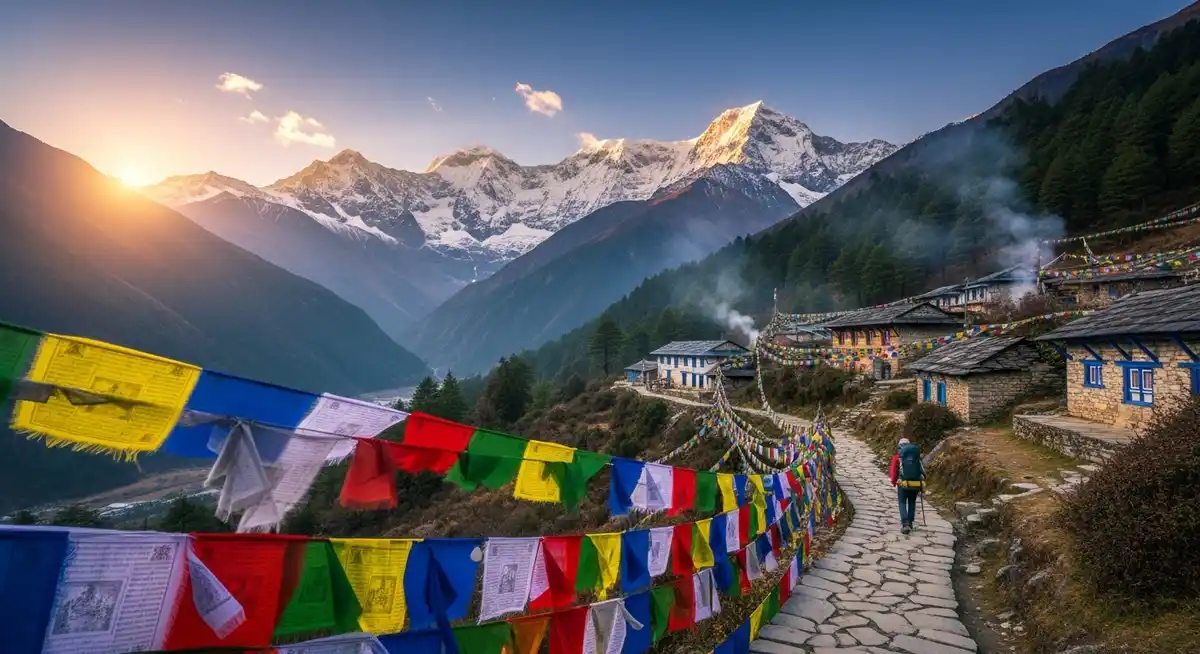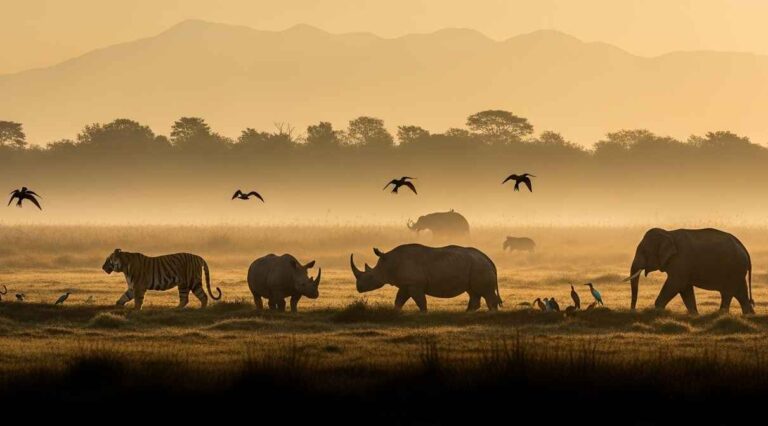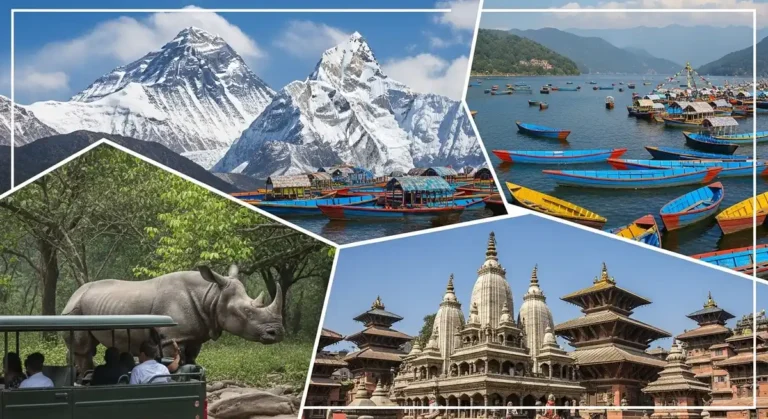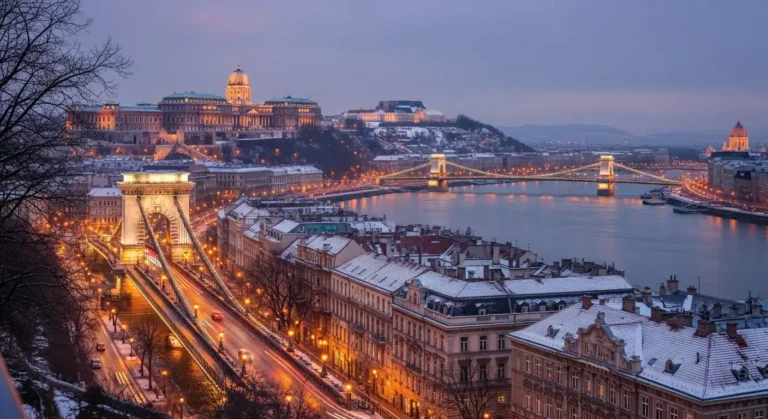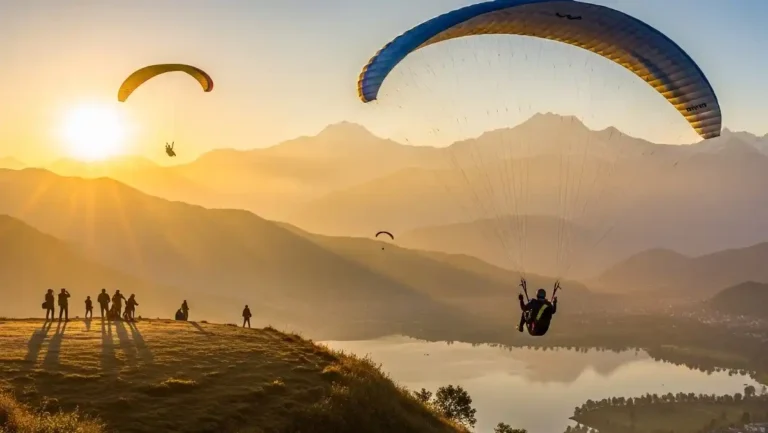Ultimate Langtang Valley Trek Guide: A Himalayan Adventure
The Langtang Valley is a breathtaking Himalayan region in north-central Nepal, often called the “Valley of Glaciers.”
It lies in Bagmati Province within the Langtang National Park, just a short distance from Kathmandu.
The area is surrounded by stunning mountains like Langtang Lirung, along with forests, alpine meadows, and shining glaciers.
High points such as Kyanjin Ri and Tserko Ri give travelers panoramic views of the surrounding peaks.
- Location & Beauty: Langtang Valley, “Valley of Glaciers,” lies in Bagmati Province, Nepal, near Kathmandu, surrounded by Langtang Lirung, Ganesh Himal, Dorje Lakpa, and stunning glaciers, forests, and meadows.
- Culture & People: Home to Tamang, Sherpa, and Langtangpa communities, deeply tied to Tibetan Buddhism, with monasteries, prayer flags, and traditions. Famous for warm hospitality and yak cheese at Kyanjin Gompa.
- Wildlife & Conservation: Protected since 1976 under Langtang National Park, rich in flora/fauna such as red panda, black bear, Himalayan Tahr, and 250+ bird species. Sustainable trekking and permits help conservation.
- Trekking Highlights: Moderate trails (Langtang Valley trek, Gosaikunda trek) ideal for beginners and acclimatization for bigger treks. Key viewpoints include Kyanjin Ri & Tserko Ri (~5,000 m).
- Itinerary: Classic 7–10 day trek—Kathmandu → Syabrubesi → Lama Hotel → Langtang Village → Kyanjin Gompa → Ri viewpoints → descent back to Kathmandu.
- Accommodation & Food: Teahouses and guesthouses with basic comforts (rooms, Wi-Fi, hot showers). Meals include dal bhat, momos, thukpa, pancakes, and traditional Nepali/Tibetan dishes.
- Best Seasons:
- Spring (Mar–May): Flowers, clear skies.
- Summer (Jun–Aug): Green, rainy, waterfalls.
- Autumn (Sep–Nov): Best season, festivals, clear Himalayan views.
- Winter (Dec–Feb): Snowy, peaceful, sharp visibility.
- Permits & Rules: Mandatory guide, Langtang National Park Permit (NPR 3000 foreigners), TIMS Card (NPR 2000). Permits from Kathmandu/Dhunche. Checkpoints along trail.
- Packing & Essentials: Layered clothing, waterproof gear, trekking boots, sleeping bag, trekking poles, hydration, first-aid, sunscreen, snacks, power bank, and required permits.
- Altitude Profile: Trek starts at 1,500 m (Syabrubesi), main stop Kyanjin Gompa at 3,870 m, viewpoints up to 5,033 m, with gradual acclimatization making it beginner-friendly.
The local inhabitants, known as Langtangpa, are closely linked to Tibetan Buddhism and share traditions from Kyirong in Tibet.
Visitors can see ancient monasteries, mani walls, and prayer flags that reflect the valley’s deep cultural roots.
The Sherpa and Tamang people are known for their hospitality, making every trip a warm and profound experience. Many also enjoy tasting yak cheese in Kyanjin Gompa, a unique highlight of the journey.
Wildlife thrives in this sanctuary, with flora and fauna such as the red panda, Himalayan black bear, and over 250 bird species.
To preserve its natural resources, visitors need an entry permit and are encouraged to follow sustainable tourism practices.
Since 1976, when the royal family declared it protected, the park has offered both adventure and conservation.
For trekking enthusiasts, the Langtang Valley trek and Langtang Gosaikunda trail are among the most popular routes.
These trails are accessible, moderate, and ideal for both beginners and those preparing for more extensive treks like Everest or Annapurna.
With the guidance of groups like Himalayan Masters, the valley is a top destination on every traveler’s bucket list.
Why Trek Langtang?
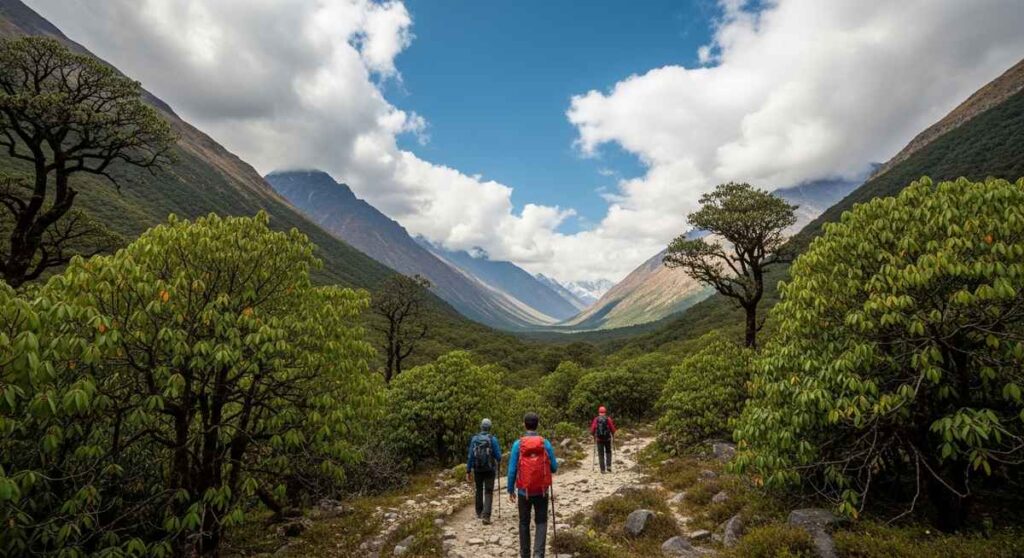
Trek Langtang for close Himalayan views, rich Tamang culture, peaceful villages, and diverse flora and fauna inside Langtang National Park.
It is near Kathmandu, less crowded than Everest or Annapurna, and offers beautiful mountain streams, ancient monasteries, and unique Yak Cheese at Kyanjin Goumpa.
A Langtang trek is on every trekker’s bucket list for its charm and beauty. The Langtang Valley is part of Nepal’s Himalayan region, close to Solu Khumbu, Everest, and the Annapurna region, yet it feels quiet and more personal.
The views of Langtang Lirung, Ganesh Himal, and Dorjelakpa are stunning, and from Kynjin Ri the Mountain View is wide and unforgettable.
Along the way, you will find streams, rocks, cliff, and deep forest filled with rhododendron, pine, bamboo, and juniper trees, along with rare flora and fauna.
Spotting a Red Panda, Himali Black Bear, or a Langur in the wild makes the walk truly special.
The Langtang Village welcomes visitors warmly, and the nearby Tamang settlements and Sherpa culture create a rich heritage to explore.
At Kyanjin Goumpa, tasting the famous Yak Cheese is a highlight, while peaceful monasteries and high viewpoints add to the journey.
With moderate altitude and trails for all levels, it is the perfect adventure close to Kathmandu.
Whether you book a package with the Himalayan Masters team or plan your own trip, help is always ready through email, WhatsApp, or in person for inquiries and questions.
A Langtang trekking experience blends nature, culture, and the true magic of the Himalayan life.
Best Time to Go & Seasonal Guide (month-by-month)
The Langtang Valley in Nepal is one of the most scenic trekking destinations. With stunning mountain views, diverse landscapes, and rich Tamang culture, every season brings its own charm. You can enjoy the valley year-round, but each time of the year gives a special experience.
Spring Season (March–May)
- March: Trails open with fresh rhododendron blooms. Snow melts, making the valley accessible and colorful.
- April: Known as the best month. Pleasant weather, clear skies, and full blossoms of pink, red, and white flowers brighten the forests and hillsides.
- May: Warm days with green vegetation. The valley feels alive with birds, wildflowers, and vibrant landscapes.
Summer / Monsoon Season (June–August)
- June: The valley turns green with thriving plants and flowing rivers.
- July: Nature is at its peak beauty with rich forests and cascading waterfalls.
- August: A time of lush greenery and fresh air, making the valley full of life.
Autumn Season (September–November)
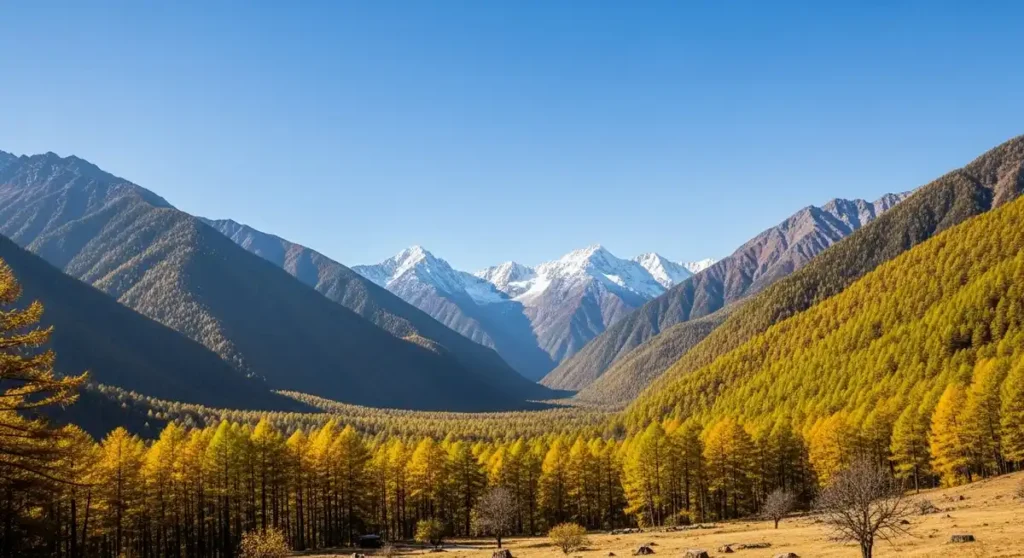
- September: Clear skies and a fresh start after monsoon. Trails are clean, lush, and inviting.
- October: The most popular month with stable temperatures, crystal views of the Himalayas, and festive spirit of Dashain and Tihar.
- November: Stunning beauty with crisp air, warm days, and incredible photography opportunities.
Winter Season (December–February)
- December: Bright days with snowy peaks, offering tranquility and peaceful walks.
- January: The Himalayan region looks magical with snow-covered landscapes and sharp visibility.
- February: A rewarding time as signs of spring return, with longer days and fresh conditions.
✨ Whether you love crystal skies, colorful flowers, or a quiet trekking paradise, the Langtang Valley welcomes you in every season.
The valley’s landscape, culture, and beauty make it one of the most breathtaking destinations in the Himalayan region.
Permits, Regulations & Entry Requirements (authoritative legal info)
To enter Langtang Valley, trekkers need a Langtang National Park Permit (NPR 3000 for foreign nationals, NPR 1500 for SAARC nationals) and a TIMS Card (NPR 2000 for individuals).
Permits can be obtained in Kathmandu or Dhunche with a valid passport, visa, and passport sized photos.
A mandatory guide is required for safety and to support conservation, while checkpoints in places like Syabrubesi and Kyanjin Gompa ensure compliance.
Main Permits and Costs
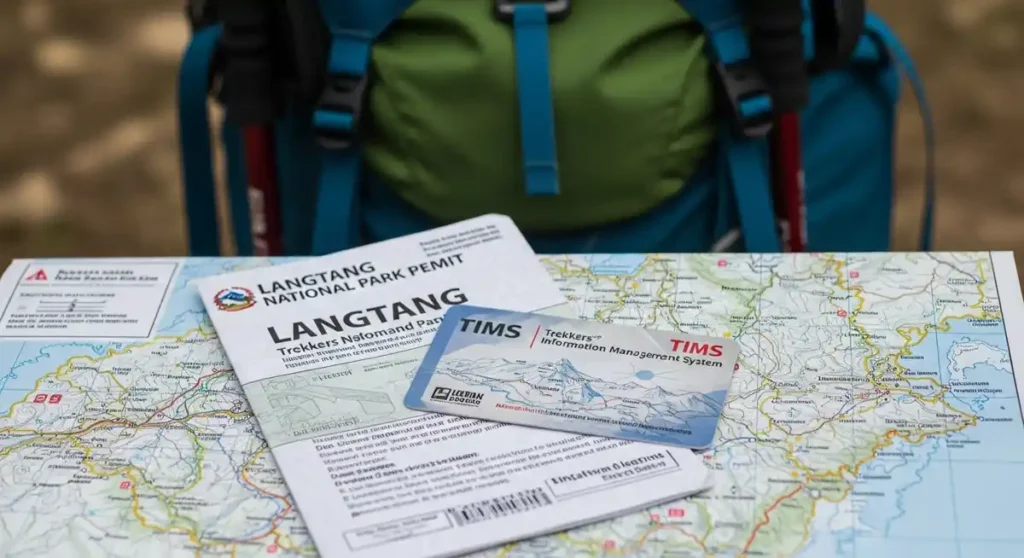
- Langtang National Park Permit: NPR 3000 for foreign nationals, NPR 1500 for SAARC nationals.
- TIMS Card: NPR 2000 for individuals; different colors (green card, blue card, pink card) for individual trekker, organized group, and SAARC nation travelers.
- Shivapuri-Nagarjun National Park Entry Permit: Needed for the Gosaikunda-Helambu route.
Where to Get Permits
- Kathmandu: Nepal Tourism Board (NTB) or Trekkers’ Agencies Association of Nepal (TAAN Secretariat).
- Dhunche: At the entrance or trailhead.
- Through a travel agency with a package for easier processing.
Documents Needed
- Original passport and visa documents.
- Passport sized photos and a few photocopies.
- Filled application form and paid bill.
Rules and Regulations
- A mandatory guide for all treks since March 2023.
- Park rangers and police check permits at checkpoints in Syabrubesi, Kyanjin Gompa, Kutungsang, Sermathang, Sundarijal, and Chisapani.
- Helps ensure safety, support the local economy, and protect the environment.
Environmental Protection
- Managed by the Langtang National Park Management Authority.
- Conserves unique ecosystems and wildlife like the red panda, musk deer, Himalayan Tahr, snow leopard, and many species of bird.
- Permit revenue supports conservation efforts, sustainability, development, and maintenance of trails, rest stops, and information centers.
Special Provisions
- Controlled areas require permits from the Department of Immigration.
- Government of Nepal allows exemptions for diplomatic missions, governmental departments, expedition members, and people with a residential visa.
- Treks like the Gosaikunda trek, Helambu trek, and Helambu-Langtang trek may need extra permits depending on the route.
Langtang Valley Trek Itinerary
Day 1: Kathmandu to Syabrubesi
Begin with a scenic drive of about 6-7 hours from Kathmandu to Syabrubesi. The road passes through hills and villages, giving a first taste of the valley views.
Day 2: Syabrubesi to Lama Hotel
The trek starts through forests of oak and rhododendron, climbing gently to reach Lama Hotel at 2,470 m. This section has fresh air, green trees, and small villages.
Day 3: Lama Hotel to Langtang Village
Walk through meadows and enjoy the sight of Langtang Lirung mountain. Arrive at Langtang Village at 3,430 m. The valley here feels like the heart of the journey.
Day 4: Langtang Village to Kyanjin Gompa

A short but beautiful day leads to Kyanjin Gompa at 3,870 m. Known as the spiritual center of the Langtang Valley, it is peaceful and welcoming.
Day 5: Acclimatizing and hike to Kyanjin Ri or Tserko Ri
Spend the day acclimatizing and taking a hike to Kyanjin Ri or Tserko Ri. At nearly 5,000 m, the panoramic views show the peaks of the Himalayas, including glimpses toward Tibet and Shishapangma.
Day 6: Kyanjin Gompa to Lama Hotel
Begin the descent, returning to Lama Hotel. The route passes back through the forests and along the villages, making the journey calm and steady.
Day 7: Lama Hotel to Syabrubesi
Continue the descent down to Syabrubesi. The trail is easy to follow, and the scenic surroundings make the walk joyful.
Day 8: Syabrubesi to Kathmandu
Take the drive back to Kathmandu, about 7-9 hrs, ending the Typical 7-day itinerary or extending into a 10-day route with extra hikes and rest stops.
This itinerary offers a spiritual journey, scenic paths, and the joy of exploring the Langtang Valley with its mountains, forests, and villages. It is both refreshing and rewarding, making it one of Nepal’s most loved treks.
Accommodation, Food & On-Trail Services
Accommodation, Food & On-Trail Services in Langtang offer cozy teahouses, family-run guesthouses, and comfortable lodges with options like twin beds, private bathrooms, and warm blankets.
Trekkers enjoy fresh meals such as dal bhat, momos, thukpa, and pancakes, with Wi-Fi, charging facilities, and hot showers available along the trail from Syabrubesi to Kyanjin Gompa.
Accommodation
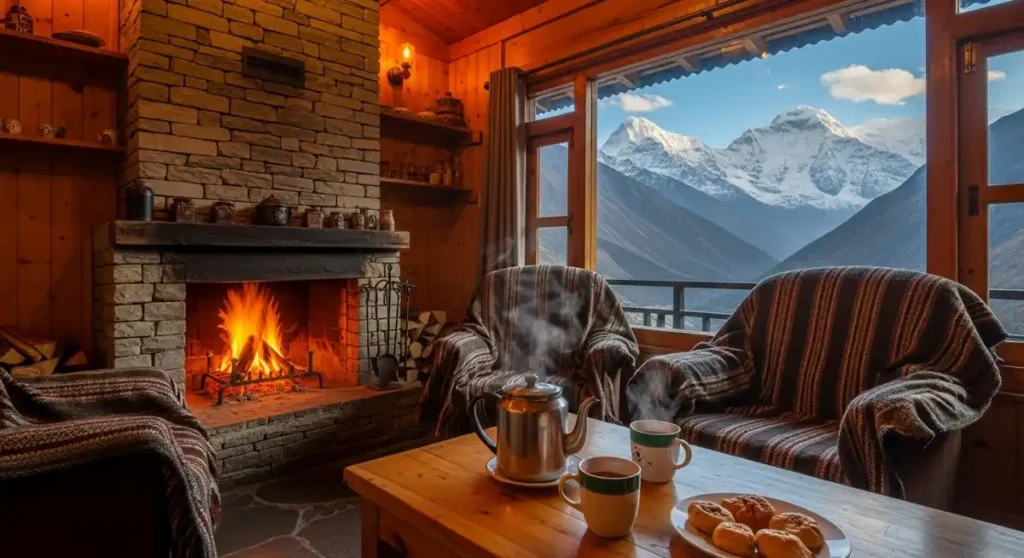
In the Langtang region, trekkers can stay in welcoming teahouses, guesthouses, and lodges run by the local people.
These visitor accommodation spots provide clean rooms with twin beds, wooden furnishings, warm blankets, and a homely dining area with a central stove.
Lodges in areas like Syabrubesi, Lama Hotel, and Ghoda Tabela often include private bathrooms, solar-powered showers, charge points, and private rooms for travellers seeking privacy and rest.
In places such as Kyanjin Gompa, higher-standard facilities like solar panels, Wi-Fi, and better views enhance the experience.
Trekkers may also choose hotels in Dhunche or try camping with the help of guides, porters, and trekking companies that provide full camping packages.
Across all villages, accommodation maintains a balance of comfort, hospitality, and rustic beauty of wood and stone settings.
Food
Meals in Langtang are fresh, home-cooked, and designed to meet dietary requirements.
A typical breakfast includes porridge with banana, oats, or millet, alongside eggs (boiled, fried, or omelet), toast, bread, jam, butter, pancakes, or chapati, paired with tea, coffee, or Nepali milk tea.
For lunch, trekkers often enjoy dal bhat (rice, lentils, vegetables), noodles, fried rice, or momo dumplings with spicy sauce.
Warming soups of vegetable or chicken, plus light snacks like cookies, biscuits, or chocolate bars, keep energy high during the trail.
At dinner, favorites include dal bhat, thukpa (Tibetan noodle soup), stir-fried vegetables, pasta, and a glass of hot milk before bedtime.
Traditional Nepali dishes such as sel roti, gundruk, aloo tama, and chatamari add variety and cultural depth, while buffalo meat, tomato chutney, and Tibetan bread give authentic flavors.
On-Trail Services
On-trail services support trekkers with electricity, charging facilities, and Wi-Fi at many teahouses, especially in Syabrubesi and Langtang Village. Mobile networks like Ncell and NTC SIM cards offer signal in some areas.
Hot showers powered by solar or gas heating are common at lower and mid altitudes, with small fees in the range of NPR 200–500. Carrying a sleeping bag, quick dry towels, a power bank, and basic toiletries is advised.
Accommodation costs remain affordable compared to treks like EBC Trek or ABC Trek.
Rates range from NPR 500–1000 at Syabrubesi, NPR 1000–1500 at Ghoda Tabela, and up to NPR 2000 at Kyanjin Gompa, depending on season, altitude, and available facilities.
Packing List & Essential Gear
The Packing List & Essential Gear in Langtang Valley includes essential permits, layered clothing, waterproof jackets, sturdy trekking boots, a comfortable backpack, sleeping bag, trekking poles, headlamp, first-aid kit, navigation tools, toiletries, and weatherproof items. Adding snacks, travel documents, and a power bank ensures comfort and safety throughout the trek.
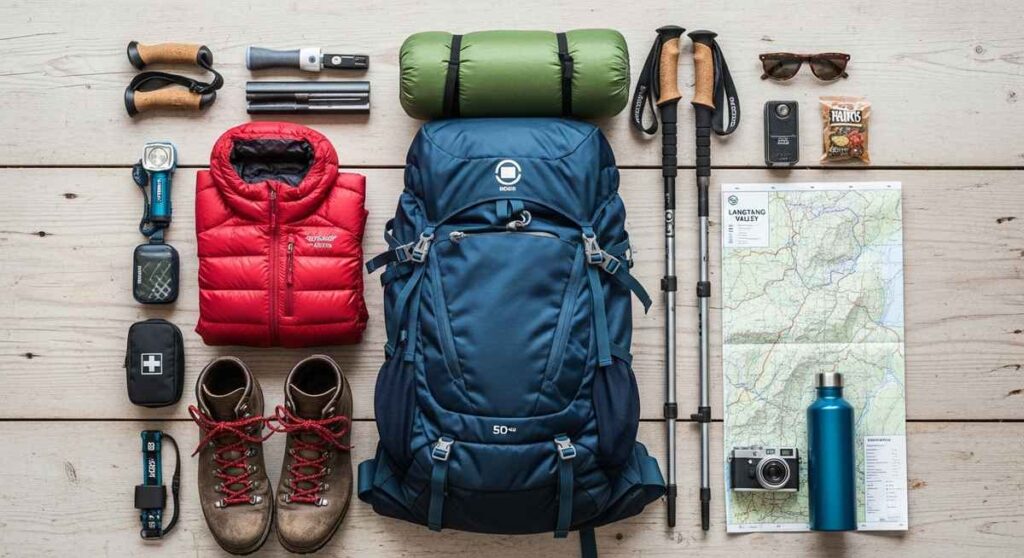
Trekking Permits
- Langtang National Park Entry Permit: NPR 3000 for foreigners, NPR 1500 for SAARC citizens, free for children under 10.
- TIMS Card (Trekkers’ Information Management System): NPR 2000 for solo trekkers, NPR 1000 for group trekkers, with reduced price for SAARC citizens.
Clothing & Layering System
- Base Layer: Thermal tops and bottoms, moisture-wicking.
- Mid Layer: Fleece jackets or down vests for insulation.
- Outer Layer: Waterproof and windproof jacket and pants.
- Accessories: Gloves, warm beanie, sun hat, woollen socks, neck gaiter.
Footwear
- Waterproof trekking boots (comfortable and sturdy).
- Sandals or lightweight camp shoes for evenings.
- Hiking socks (moisture-wicking and thermal).
Backpacks and Bags
- Duffel Bag: 50–65 liters, waterproof, lightweight, with compression straps (carried by porters).
- Daypack: 20–30 liters, hip belt, breathable material, rain cover, hydration bladder space.
Raincoats & Weatherproofing
- Rain Jacket: Waterproof, breathable shell (e.g., Gore-Tex).
- Rain Pants: Lightweight and quick-drying.
- Backpack Rain Cover: Fits snugly for protection.
- Umbrella or poncho as optional extras.
Essential Trekking Gear
- Sleeping Bag: Rated for cold nights.
- Trekking Poles: For balance and support.
- Headlamp with extra batteries.
- Water Bottles / Hydration Bladder (2 liters).
- Water Purification: Tablets or filters.
- First-Aid Kit: Medications, blister treatment, electrolytes.
- Multi-tool or knife, towel, repair kit, and duct tape.
Toiletries & Skincare
- Sunscreen SPF 50+, lip balm SPF 30+, moisturizer.
- Hand sanitizer, soap, toothbrush, toothpaste, wipes, toilet paper.
- Sanitary pads or tampons for female trekkers.
- Deodorant, powder, nail clippers (optional).
Miscellaneous Items
- Camera & Extra Batteries for scenery.
- Portable Charger / Solar Charger / Power Bank.
- Travel Adapter (Type C or D plugs).
- Snacks: Chocolates, protein bars, nuts, dry fruits.
- Ziploc bags for organizing items.
- Notebook for journaling and emergency contact copies.
Langtang Valley Trek Altitude
The journey on the Langtang Valley trek begins at the starting point of Syabrubesi at 1,500 meters (4,920 feet).
The trail moves through stunning villages, forests, and rivers before reaching the main destination, Kyanjin Gompa, at 3,870 meters (12,697 feet).
Along the way, trekkers enjoy beautiful key altitudes such as Lama Hotel (2,470 m / 8,103 ft) and Langtang Village (3,430 m / 11,255 ft).
The final part of the trek reaches higher viewpoints including Kyanjin Ri (4,773 m / 15,659 ft) and Tserko Ri (5,033 m / 16,512 ft).
These high points provide panorama views of the Langtang Range, with peaks like Langtang Lirung, Dorje Lakpa, and Yala Peak.
The trek covers distances of 6 km to 9 km round trips depending on the chosen route, often taking between 1 hour to 5 hours from Kyanjin Gompa.
Each stop offers unique scenery, from morning views of the mountains to peaceful valleys.
With good preparation and the company of a mandatory guide, this trek offers an ideal experience for both beginners and experienced trekkers.
The combination of gradual altitude gain, physically strong walks, and breathtaking views makes the Langtang Valley trek altitude one of the most rewarding journeys in the high-altitude Himalayas.
Conclusion
The Langtang Valley is more than a trek—it’s a journey through culture, nature, and Himalayan beauty. Every step feels alive with wonder, making it a true once-in-a-lifetime experience.
Frequently Asked Questions
How long does a Langtang Trek take?
The Langtang trek usually takes 7 to 10 days. A common plan includes travel from Kathmandu, walking through forests and villages, and reaching Kyanjin Gompa. Trekkers can add extra days for rest or side hikes to high viewpoints.
Is Langtang Valley Trek difficult?
The Langtang trek is moderate. The paths climb gently through forests and valleys before reaching higher spots. With steady walking and short breaks, beginners and regular trekkers can enjoy it without stress.
Can I do a Langtang trek without a guide?
Since 2023, a guide is mandatory for all treks in Langtang. Guides make the trip easier by showing safe paths, sharing local stories, and helping with permits. They also support conservation and the local economy.
How much does a guide cost for the Langtang trek?
A guide usually costs about NPR 2,000 to NPR 3,500 per day. This includes help with directions, safety, and cultural insights. Some guides also manage permits, tea house bookings, and smooth daily plans.
Can you trek Langtang without a guide?
No, trekking without a guide is not allowed now. The rule ensures safety, protects the area, and gives jobs to local people. With a guide, the journey feels more secure and meaningful.
What is the highest point on the Langtang trek?
The highest point is Tserko Ri at 5,033 meters. Another high spot is Kyanjin Ri at 4,773 meters. Both give wide views of Langtang Lirung and nearby Himalayan peaks.
Is Langtang safe after the 2015 earthquake?
Yes, Langtang is safe now. Trails, tea houses, and villages have been rebuilt. Trekkers enjoy improved paths, friendly locals, and safe stays during the trip.
Are there ATMs on the Langtang route?
There are no ATMs on the trail. It is best to carry enough cash from Kathmandu. Teahouses and lodges only accept cash for food, rooms, and services.
Can children/seniors do Langtang?
Yes, children and seniors can do the Langtang trek. The paths are steady and not too hard. With good planning, slow pace, and rest, the trek suits families and older trekkers too.
Disclaimer
This guide is for informational purposes only. Travel plans, permits, and requirements may change. Always check official sources before trekking. Traveldrizzle.com is not responsible for any changes, delays, or personal decisions made based on this content.
